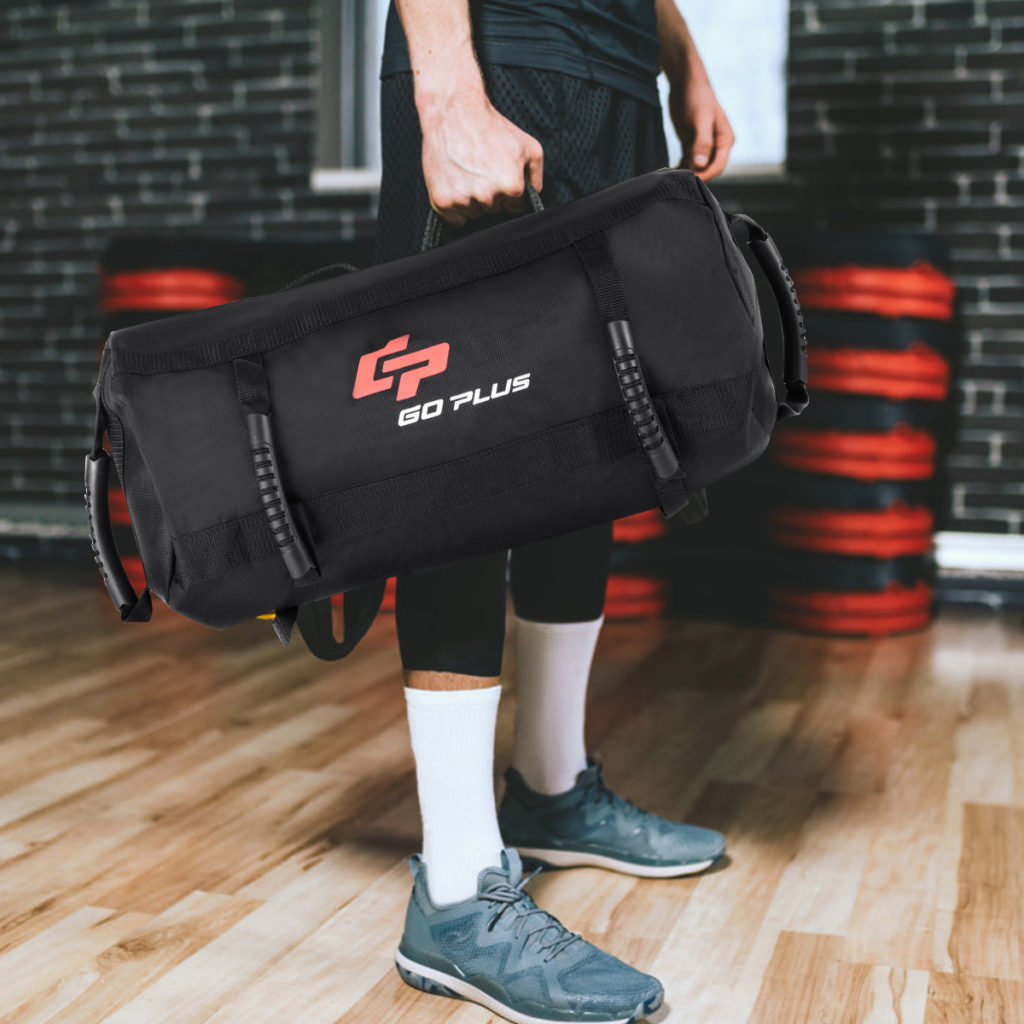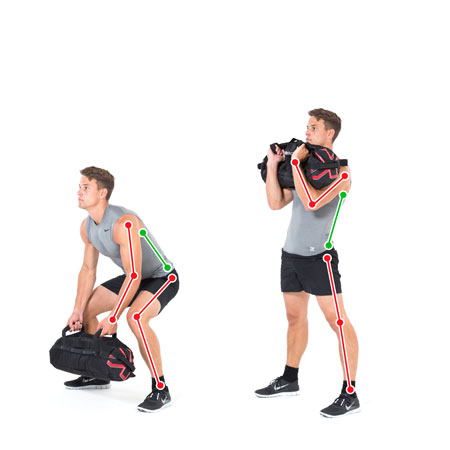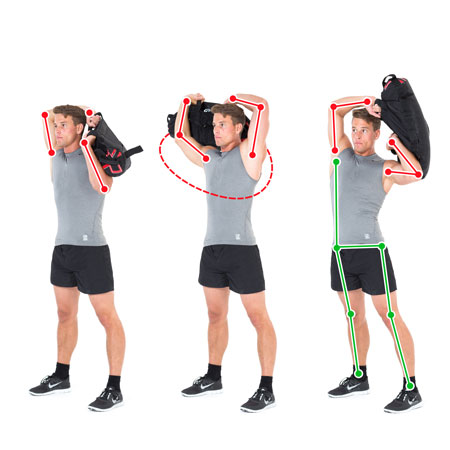Sandbags are a time tested solution to flooding problems, but they have another use that is gradually gaining traction in the fitness community; providing safe, effective, and simple workouts. This article explores all the ins and outs of gym sandbags and how to make the best of them for your individual workout routines and gains!
Gym sandbags are a fresh and unique alternative or swap in for dumbbells, as they work different parts of your body than similar equipment, and are easy to find, make, or purchase.
Gym sandbags are unstable and constantly shifting due to their sand makeup, and so they’re a great tool for also training grip strength.
But that’s not all, they also can give you a moderate or high-intensity cardiovascular workout if pushing yourself, especially using heavier weighted bags, which is also beneficial for upper and lower body muscle and strength building.

Choosing a sandbag is not very difficult or a drawn-out process, however, it is best to shop around and make sure you purchase a lighter weight and easier to use gym sandbag if you are new and just starting out.
It reduces the risk of injury and joint strain, as well as overworking yourself and becoming burned out before you even get fully started.
Gym sandbags are a wonderfully effective calorie burner as well, given their difficulty to lift and carry pushing your body into a higher intensity workout, so below are some common sandbags exercises and their functions.
The Sandbag Clean

This exercise, like most using gym sandbags, is easy to perform and offers many strength and muscle toning benefits, in particular, this one builds muscle and power in the glutes, quadriceps, back, and arms.
How to perform The Sandbag Clean
Begin by standing over the sandbag and squatting, flip your wrists so they are in a forwards position, and quickly pull the sandbag upwards towards your shoulders with an abrupt flexing motion lifting you slightly off the ground, in a similar way to a small jump or hop.
Reposition your body neutrally and stand normally, then begin shifting the sandbag down towards your lower legs and thighs before changing into a squat position and resuming the above steps once again.
Another step in between holding the bag can also be included in bracing it against the chest when swinging it upwards.
Muscles worked:
Mainly upper body, especially the shoulders, back, biceps, and core, but also has benefits for the glutes and hamstrings.
Difficulty Level: Medium
How to perform The Sandbag Deadlift

Position the sandbag directly in front of your body, bend over with proper form, leaning with your back in the correct position and bending your knees, as to lift more with your legs, then grasp the bag by both its handles on either side and pop back in the upright pose with your back properly aligned, standing firmly with the bag below the navel and touching the thighs.
Repeat the above steps to do more reps and improve speed and technique, finding which one feels best for you.
Muscles worked:
Lower back muscles and thighs
Difficulty Level: Medium
How to perform The Sandbag Snatch

Standing shoulder-wide, and with your upper body bent frontwards, taking care to have your back completely straight, grasp the sandbag with your arms extended straight forward, then swing the bag towards your chest, and finally, slowly lowering the sandbag down to the floor and resuming your original position.
Repeat as often as desired.
Muscles worked:
Legs, thighs, back, shoulders, and upper arms
Difficulty Level: Easy
How to perform The Sandbag Rotational Lunge And Swing

Standing upright, with the bag on the shoulder, lung forwards, and shift the sandbag to the other side of your body in a quick and fluid motion, then, bring the bag back onto your shoulder just as fast.
Muscles worked:
Legs, shoulders, arms, back, and core
Difficulty Level: Medium
How to perform The Around The Head Sandbag Exercise

Hold and position the sandbag behind your head, standing with your back straight, then swing the sandbag in a circular motion around your head, aiming to position it back where it started.
Can be done in the same or inverse direction to provide variance and train both sides of the body.
Muscles worked:
Shoulders, arms, hips, and chest
Difficulty Level: Easy
Another important thing to note about gym sandbags is that they are very versatile, and can be filled with more than only sand, creating a different weight distribution and large varieties of textures and experiences, tailoring your workout sessions to suit your preferences.
Filling the sandbag with other materials such as blankets, towels, small gravel, mulch, and lighter wood pellets offer a different workout experience and allow easier and less straining repetitions of any of the more difficult sandbag training techniques or exercises.
As long as the fillers you are using won’t damage the bag, leak, or weigh too much and risk injury to yourself, pretty much anything goes!

Choosing a gym sandbag with handles and straps is essential if you’re going for ease of use and versatility, as various training techniques require the grabbing and abrupt shifting of the bag, which is something not easily done if it’s lacking handles or something firm to grab onto.
Though some bags can come with more than a handle or two, even 4 or up to ten, which provides a wide range of movements and capabilities in your routine that you otherwise could not do easily.
It’s best to consider the use of your bag, such as what sort of routines and exercise regimens you hope to perform and accomplish with it, before settling on one and purchasing.
Another important detail to note is the size and general weight of the bag, as they can fit anywhere from 10 to 90 pounds of sand in them, or other filler materials, so best to start small when thinking of purchasing your first one, and then work your way up the ladder.
Sandbags can be purchased already filled with a preferred material, or come empty with the necessary pockets ready to use and fill yourself at your leisure, though generally, purchasing an already empty bag is often cheaper, and it’s not as if filling it is too complicated a procedure.

Gym sandbag accessories can also be helpful, though not fully necessary, but are an option worth considering before finalizing your purchase.
Tools such as proper and well-fitting knee and wrist pads will help to lessen the risk of injury or strain on your body, and a firm but soft exercise mat to train on while using your bag is also a good choice.
There are a wider variety of techniques and exercises that can be done with sandbags than discussed in this article, so what you hope to accomplish should help shape your purchase, and taking care to vary your routine and strengthen different muscles in other workout sessions aids in not overextending the same ones and causing painful soreness or even potentially tears in the muscles.
Safety, caution, and starting small are the key aspects to keep in mind as you attempt to take on any new fitness endeavor, as bad experiences can color your perceptions and make you less likely to try new things or practice ones that gave you the bad experience.
How much will my Gym Sandbag cost?

Finally, the main aspect to consider is cost, which can, of course, vary depending on materials used, size, and weight that the bag is capable of holding, and in general, by who manufactured it.
But, on average, they can range from 20 to 200 dollars depending on the above traits and other aspects, so shopping around to find one that has the necessary accessories and design you desire, along with none of the things you don’t need can save you money in the long run.
In summary, Gym Sandbags are an easy, affordable, and often overlooked training and fitness multitool that can be used by everyone, beginner or novice, and tailored to suit the individual needs of the purchaser.
It’s up there in the essentials that everyone into fitness should try to have on hand and make good use out of, as the benefits are plentiful, and without the drawbacks that are often present in other gym equipment and fitness tools and gear.
Thank you for reading, and well wishes in health and fitness!
